Today’s consumers expect personalized experiences across all digital touchpoints. This means that implementing ecommerce personalization strategies is crucial for brands to meet these expectations.
In fact, 62% of shoppers believe that companies could improve their customer experiences with better ecommerce personalization strategies.
Adopting ecommerce personalization strategies not only distinguishes your brand but also positively impacts your bottom line. 70% of consumers tend to spend more with companies that offer personalized and seamless customer experiences.
The COVID-19 pandemic came as a “White Swan” event that wiped out $2.7 trillion from the global economy.
Ecommerce brands are coming to grips with evolving consumer behavior trends, purchase patterns, and situational habits. All in all, Ecommerce Personalization is set to be the benchmark strategy to be implemented in these kinds of situations.
Making Sense of the New Normal
According to a recent Nielsen research report, there are six major consumer behavior thresholds on the COVID-19-necessitated lockdown across countries:
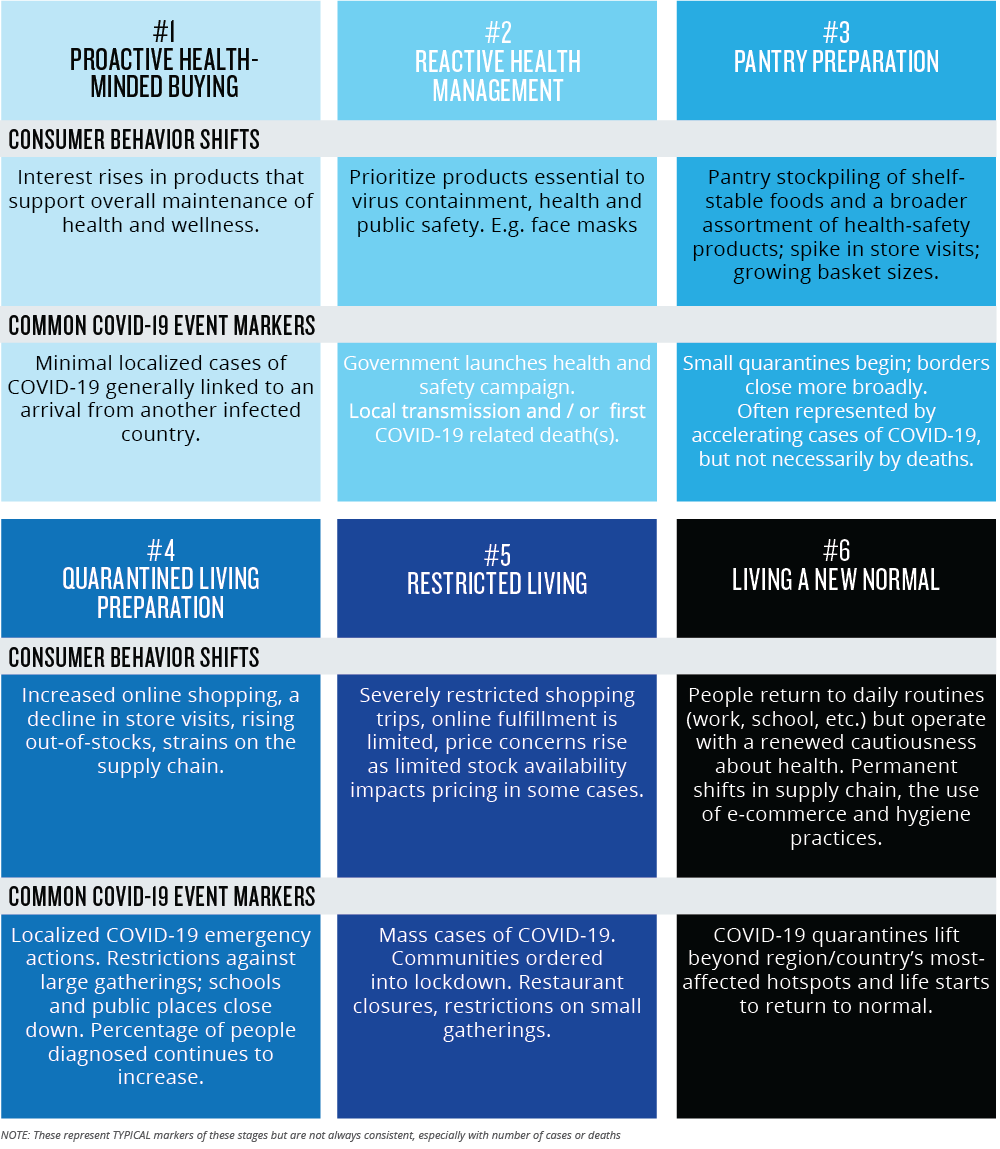
A lot of the advanced and developing economies have gone through the first three levels quite comfortably. What’s new for both advanced & emerging businesses are the consumer behavior patterns across the next three levels, which are now beginning to take shape ‘work from home’ periods are likely to get extended.
The levels of 4, 5 & 6 provide e-commerce businesses with an opportunity to proactively respond to new demand signals across varying demographics. This is where personalization becomes of utmost importance as businesses can keep a firm pulse on their digital customers’ new needs, wants, likes, dislikes & expectations. You can personalize the entire customer experience by delivering value at every stage across individual lifecycles.
8 Ecommerce Personalization Strategies That Work
To help combat these unprecedented times, re-imagine growth, and deliver customer delight at scale with omnichannel personalization – we’ve outlined 8 key action steps you can consider implementing:
1. Unearth insights for ecommerce personalization including the use of push notification tools:
Fact: Existing chapters of the marketing playbook may no longer be relevant. New chapters are being written almost every month, week, or even every day.
What worked for you until February 2020; is unlikely to shape your future customers and revenue growth engine. Your whole ROI rate and the income graph are set to change.
So, double down on gathering and unifying the right customer data for effective ecommerce personalization strategies. Build and gain a 360-degree view of individual customers based on their demographic, geolocation, behavioral, and device-related data points.
Slice and dice this data to gather new actionable insights on evolving consumer behavior trends.
You’re more likely to uncover higher engagement and conversion rates from customer segments that previously scored lowly on RFM parameters.
For instance: Confined indoors and without access to physical grocery stores or pharmacies, older citizens started ordering online over websites and apps. This was an outlier customer segment that came into sharp focus during the COVID-19 crisis.
These new customer segments opened new avenues to increase CLTV and retention through AI-led ecommerce personalization strategies. Utilize push notification marketing to reach them effectively.
But don’t allow these insights to dictate decision-making
You need to dig deeper to identify and categorize consumption trends – relevant to your ecommerce platform – into the following buckets:
- Temporarily postponed: This includes high ticket-value items such as apparel, electronic gadgets, footwear, etc.
- Accelerated: This includes daily grocery items, medicines, etc.
- Disturbed: This includes facemasks, gloves, hand sanitizers, etc.
Categorizing these trends will enable you to make clearer distinctions between what your customers consider as “essentials” and “indulgences”. Remember that these customer perceptions are likely to evolve during this period and once a greater semblance of normalcy returns.
For instance: When the lockdown came into effect in the USA, only 13% of households were ordering food online in the first week. This percentage jumped to 38% by the third week. This highlights the changing attitude of customers towards food delivery from an “essential” to an “indulgence”.
2. Identify new buyer personas:
Fact 1: The COVID-19 crisis reshaped buyer personas that are going to respond differently when the situation begins to normalize.
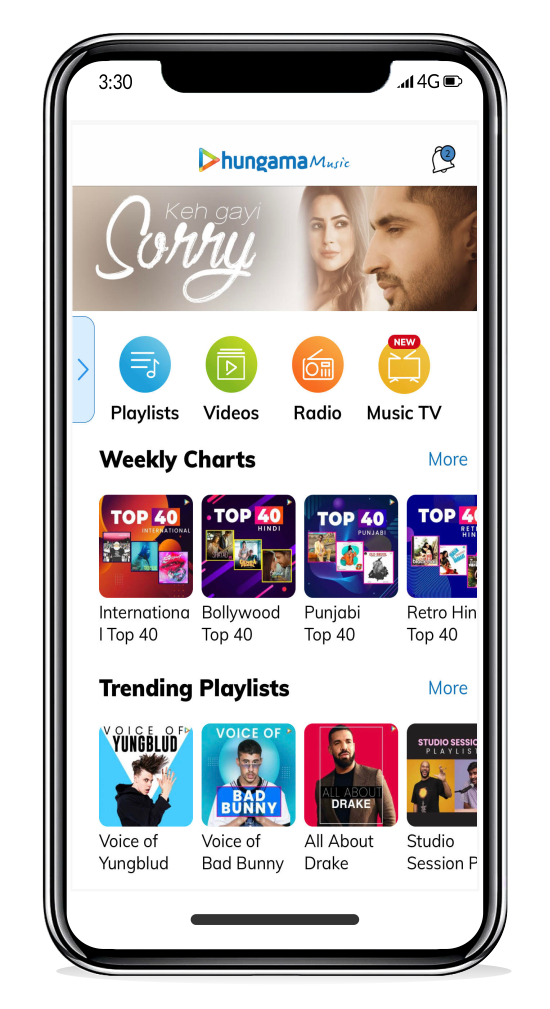
After carefully analyzing millions of customer behavioral data points, we’ve identified five key buyer personas that are going to drive demand now:
The Captive Buyer
This type of buyer is reluctant to substitute one product or ecommerce platform due to the high cost of switching( time, effort, and money). They don’t mind postponing purchases based on product availability, last-mile delivery capability, ease and familiarity of platform usage, etc.
The Hoarder or Panic Buyer
This buyer’s demand is not dictated by the price but by the more primal emotion of fear. They are likely to purchase products in bulk – primarily “essentials” such as groceries, healthcare and hygiene items, etc. They are also unlikely to spend too much time and effort searching and browsing for products, which is why you need to offer the most relevant product recommendations ASAP.
The Price-Conscious Buyer
This buyer displays maximum loyalty to the price of the products they might be interested in rather than your platform or overall customer experience. They will be more attracted to product bundles, offers, and discounts that appeal to his/her spending propensity.
The Hesitant Buyer
This buyer begins with the intention of making a purchase but is highly likely to postpone or abandon the transaction completely during checkout. You need to give this persona confidence in your platform, customer experience, and last-mile delivery. An omnichannel marketing approach that allows you to orchestrate customer journeys, nudging them to complete a purchase, will go a long way in increasing conversions.
The Impulsive Buyer
This type of buyer makes snap purchase decisions during checkout and is ripe for targeting with relevant cross-sell and upsell product recommendations. This is going to help you increase your average order value per conversion.
3. Personalize the navigational flow across your website or the mobile app:
Fact: It doesn’t matter if your e-commerce website has the greatest looking Home Page or the most visually pleasing app UI/UX anymore. You need to do more. Your customers are unique individuals, so showing the same website or mobile app to both first-time visitors and repeat customers won’t work anymore!
Leverage your customer’s browsing behavior and order history to customize how you want them to navigate across your website. The more customized your navigational journey, the higher the chances of you directing them towards a purchase – faster.
You can also experiment with dynamic website elements such as graphics, banner images, and CTAs to optimize the persona-based viewing and navigation experience. Utilize web push notifications and push notification tools to engage users effectively.
For instance: You can personalize the Home Page viewing and navigation flow across your e-commerce platform depending on whether a new visitor (or an unregistered app user) or a repeat registered customer lands on your website or launches your mobile app, thereby significantly improving e-commerce personalization.
4. Strategically leverage AI-driven live Product Recommendations:
Fact: When your customers are active on your website or mobile app, you need to shorten their paths to conversion by giving them product recommendations that are tailor-made to each one of them. And, if you have a large product catalog, then you need AI to do all the heavy lifting, in real-time.
Our AI engine – Raman – enables you to show the most relevant product recommendations across your Home Page, Product Display Page, and Product Listing Page.

Recommendations on your Product Display Page increase CTRs by 30 – 50%
You also need to re-order product categories on-the-fly depending upon the search behavior, purchase intent, and historical completed orders on your platform – all to ensure that your buyer personas get exactly what they’re looking for or what they’re most likely to buy – faster.
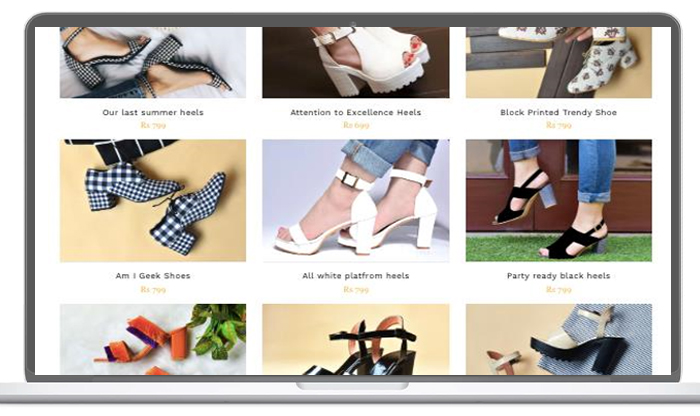
Re-ordering Product Categories can boost CTRs by as much as 60 – 80%
For instance: To better cater to your new buyer personas and customer segments, you need to deploy AI algorithms that learn from their actions and inactions in real time to deliver contextual product recommendations on your website or mobile app. This includes the use of rich push notifications to engage customers effectively.
The AI engine learns intuitively and can eventually predict with a great degree of accuracy what an individual user is most likely to click on, add-to-cart, and purchase. Use browser push notifications to bring them back to your site.
5. Curate a personalized virtual storefront:
Fact: Directing your customers to what they want has to be a relentless pursuit, as part of your larger e-commerce personalization strategy.
You can climb higher up the ecommerce personalization mountain by creating a virtual storefront for individual customers. Not only should this contain product recommendations with the highest probability of purchase, but it would also continue to get dynamically refreshed based on customer eyeball data.
This means that this specially curated list of products would account for those recommendations that work and those that don’t and refresh automatically – based on how many seconds a customer spends hovering over an item. These time-stamped signals loop back into our AI engine, making it smarter, with every interaction that a customer has with your platform.
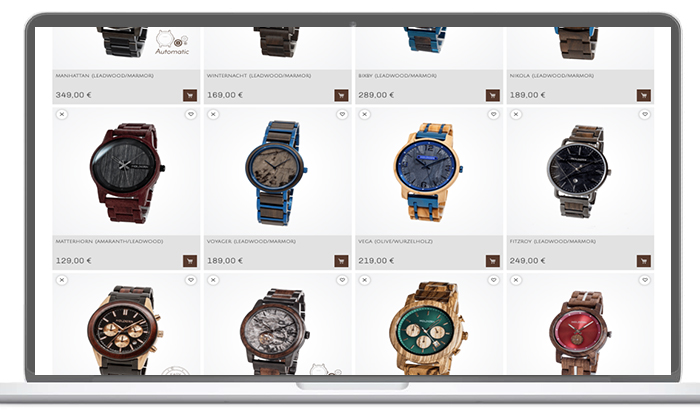
Building a Personalized Boutique can increase CTRs by 120 – 150%
6. Deliver predictive product recommendations across channels including push notifications service:
Fact: Your AI-led e-commerce personalization strategy has to extend across multiple channels and devices, even when your customer is inactive on your e-commerce website or mobile app. Well-timed 1:1 customer engagement across digital touchpoints increases the probability of conversions – exponentially.
Trigger laser-focused product recommendations across high-impact channels such as email, app push notifications, and web messages.
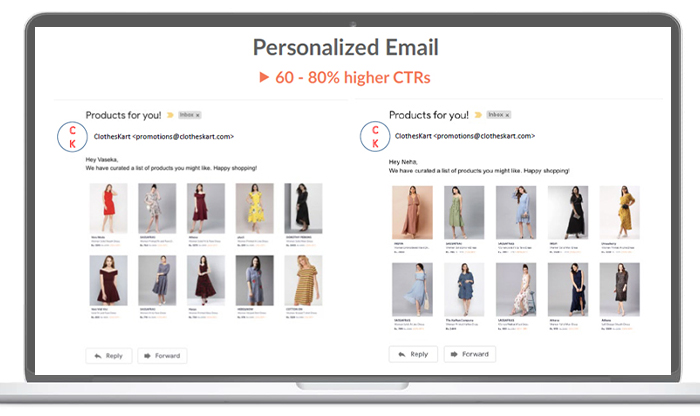
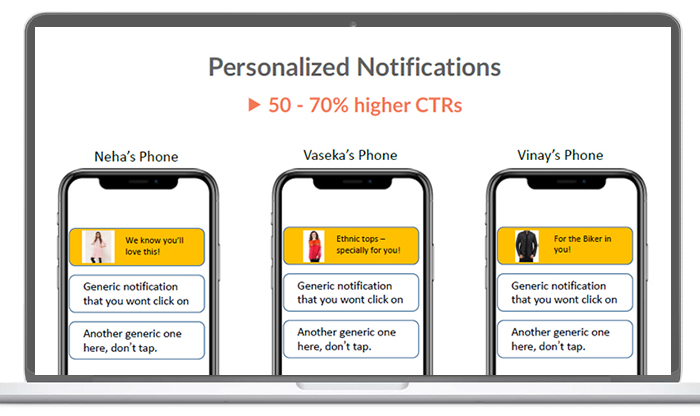
Here is the kind of contextual recommendations that you can deliver to pursue conversions beyond just your website or the mobile app:
“Suggested for You” Recommendations
These are the best possible recommendations tailored to individual customers based on their general historical behavior; i.e. product/product categories viewed, items added to cart, purchase, etc.
Cart Abandonment Recommendations
These are generated based on the products added to individual customers’ digital shopping carts where the customer may have dropped off or not completed a purchase
Buying Pattern Recommendations
These are generated based on individual customers’ most recent product purchases
For instance: If you identify a customer segment that has repeatedly purchased Instant Noodles within the Dry Grocery category and is out of stock due to a demand surge – you can trigger personalized email recommendations updating this segment when the product is back in stock, improving ecommerce personalization.
Viewing Pattern Recommendations
These are triggered based on individual customers’ most recent products or product categories viewed
Bestselling Recommendations
These are generated based on the highest-selling products on your website or mobile app. These are products that are being purchased the most when compared to other products over a while
For instance: In the current scenario, health safety and hygiene products such as facemasks, disinfectants, and hand sanitizers have quickly become best-selling products – over the last 2 months – and will see a steady demand even when the lockdown period is relaxed.
Trending Recommendations
These are generated based on the most trending products on your website or mobile app. Essentially, these are products whose consumption has shown a percentage increase over some time.
For instance: Building on the above example, health safety, and hygiene products like facemasks rapidly became a trending product within its category and very soon emerged as a bestselling product, as the COVID-19 turned into a pandemic.
Recently Viewed Recommendations
These are generated based on the most common products that have been recently viewed by individual customers on your platform
“New Arrival” Recommendations
These are generated based on the new products that have been added to your product catalog. Our AI engine maps these products to the ones that are most relevant to individual customers and hits upon the ideal recommendations, capable of nudging them toward an eventual purchase
Depending upon what channels of customer engagement are working best for which customer segments and buyer personas, you can optimize your multi-channel mix as well as the send-times for these campaigns.
Not only do your recommendations have to be personalized, but they also need to be delivered on the right channel and at the right time. And our AI engine facilitates all of this. Utilize browser push notifications and web push notifications to reach customers effectively.
7. Harness AI-led product recommendations to manage your inventory effectively:
Fact: Your marketing efforts and inventory management have to go hand-in-hand to increase consumption while driving down overhead costs associated with surplus inventory.
The current COVID-19 situation would have fuelled greater demand for certain products while completely eroding demand for other items in your product catalog.
So, don’t just rely on “Bestselling” or “Trending” product recommendations to drive conversions. Also account for other products – similar or otherwise – that you can suggest to ease the pressure on your built-up inventory.
Incentivize purchases with attractive discounts, offers, and combo deals. It’s a subtle balancing act and operational trade-off, but an aspect of your marketing strategy that requires urgent attention.
8. Deliver customer experience for better ecommerce personalization experience, including real-time notifications
Fact: Customer satisfaction is a function of delivering seamless, reliable, and consistent customer experiences over a long period.
While AI-led product recommendations will open up relevance-backed conversion opportunities across customer segments and buyer personas, you still need to get other elements of your value chain just right, such as:
- Seamless website or mobile app UI/UX
- Fool-proof virtual payment gateways and flexible modes of payment
- Sturdy packaging
- Reliable in-time last-mile delivery
- Provision for new-age package collection, eg: contactless delivery
The new rules of ecommerce marketing are already in play. But, relentless focus on the holistic customer experience – backed by personalization – can go a long way in bending those rules in your favor.
Tackling the New Normal…With AI as your Ally
Omnichannel personalization can help your e-commerce brand unlock new waves of the user and revenue growth for the remainder of 2020 and beyond.
While customer data and AI will enable you to fulfill latent demand, tap into new conversion opportunities, and turn newly identified focus customer segments into loyalists – don’t be a hard-sell!
At such a time, you need to position yourself as a situation-aware, empathetic, and customer-centric brand. And not come across as a tone-deaf, opportunistic, and ROI-focused brand.
Want to learn how you can harness the power of AI to increase conversions by 8 – 13%? Get in touch with our growth experts, today!
 By 2028, 2 in 3 organizations will run on Agentic AI. Don’t fall behind. Access report now →
By 2028, 2 in 3 organizations will run on Agentic AI. Don’t fall behind. Access report now →







